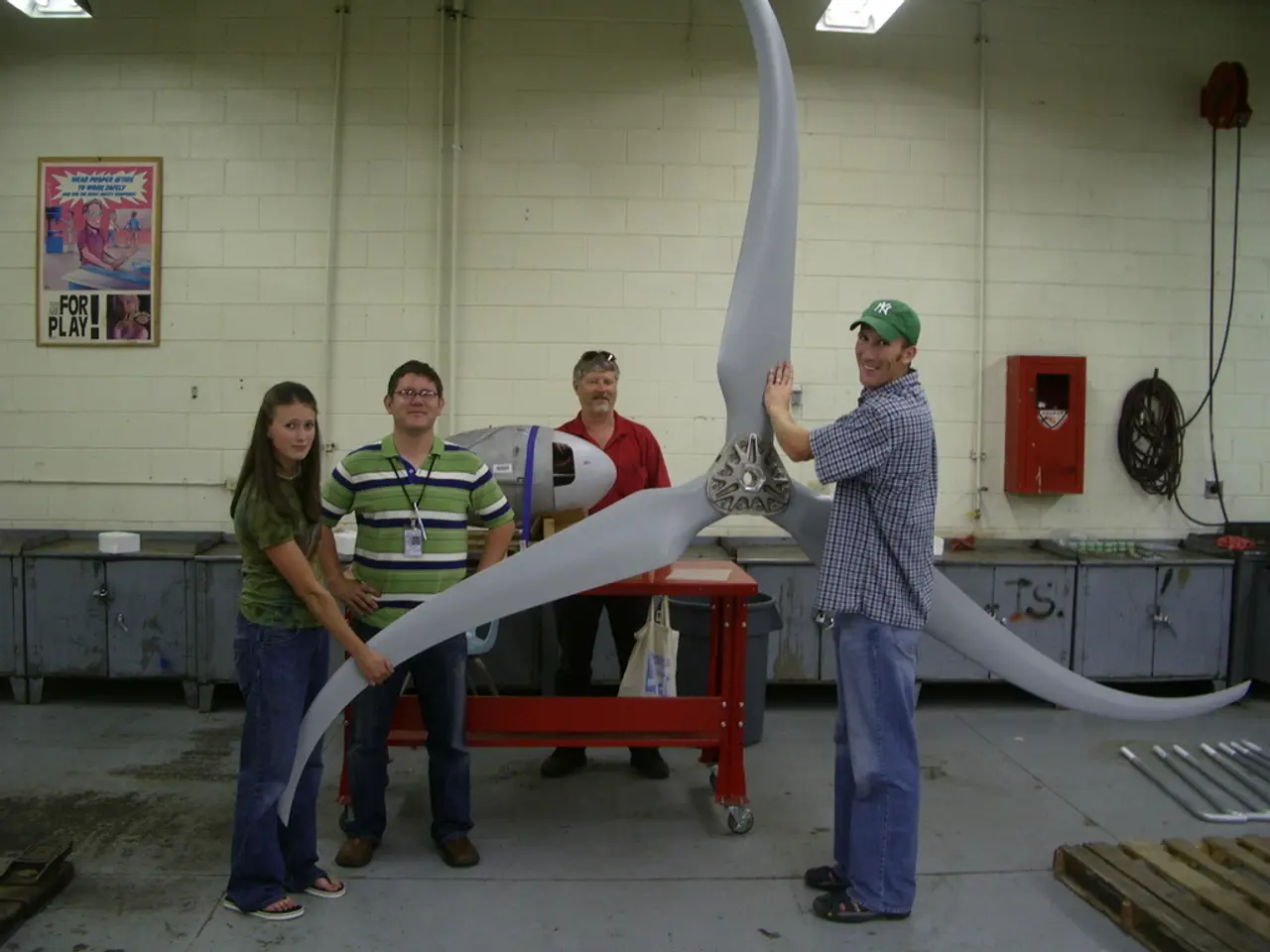Catastrophe from nuclear fusion: Not as severe as you might think, elaborated
The world of energy production is abuzz with excitement as advancements in fusion energy for power generation are moving at an unprecedented pace. Some projects are aiming to demonstrate net positive energy as early as 2027, with grid power delivery expected in the early 2030s [1][2][3][4][5].
Companies like Commonwealth Fusion Systems (CFS) are constructing tokamak reactors, leveraging abundant fuel sources such as deuterium and tritium from seawater and lithium, which promise low fuel costs [1]. This development is a significant step towards commercial net energy production.
The global energy landscape is witnessing a surge in collaboration, with increased investment, such as the UK's £2.5 billion funding boost. Advances in plasma control, materials science, and AI applications are being harnessed to optimise fusion reactor operations [5]. Fora such as the World Fusion Energy Congress 2025 highlight ongoing efforts in innovation, supply chain strengthening, and policy frameworks to accelerate fusion commercialization.
However, several challenges remain in fusion energy development. While fuel costs are expected to be low, the high upfront financing and infrastructure costs make the ultimate electricity cost uncertain. Fusion becomes very competitive at around $50 per megawatt-hour, but initial costs may be higher [1].
Developing materials that withstand intense neutron fluxes and extreme conditions inside reactors is critical. Continuous power extraction and stable plasma operation require new materials and engineering solutions [5]. Moving from experimental reactors to reliable, grid-integrated power plants involves technical, regulatory, and supply chain complexities [2][4].
Maintaining stable plasma states to sustain fusion efficiently and safely demands advanced plasma control technologies and AI-driven monitoring systems [5]. Many predictive models need validation against commercial reactors, which are still under construction or in early operational stages [5].
Despite these challenges, fusion energy offers several advantages over fission energy. The main product of fusion reactions is inert helium, with only minor and short-lived radioactivity generated [6]. This means that fusion energy disasters are less likely to have severe long-term environmental impacts compared to fission energy disasters [7].
In contrast to fission energy, fusion fuel is usually contained with magnetic fields. A failure of a fusion reactor will immediately stop the energy generation, making it less dangerous compared to a fission reactor in the event of a disaster [8]. The waste products of fusion energy are generally safer than those of fission energy, which remain dangerous for a very long time [9].
In summary, fusion energy development is rapidly advancing towards commercial demonstration in the next decade, driven by improved reactor designs, international collaboration, and increased funding. However, it faces substantial materials, economic, and technological challenges that must be overcome to realize widespread, cost-effective power generation [1][2][3][4][5]. Despite these challenges, the potential benefits of fusion energy make it a promising alternative to fission energy.
References: [1] https://www.cfs.com/ [2] https://www.iter.org/ [3] https://www.iTER.org/ [4] https://www.pppl.gov/ [5] https://www.fusion-energy.eu/ [6] https://www.fusion-energy.eu/ [7] https://www.fusion-energy.eu/ [8] https://www.fusion-energy.eu/ [9] https://www.fusion-energy.eu/
- The future of energy production is being redefined with advancements in fusion energy science, as companies like Commonwealth Fusion Systems strive for net positive energy production by 2027.
- Fusion energy development is increasingly gaining industry support, with investments such as the UK's £2.5 billion funding boost, while improvements in plasma control, materials science, and AI applications are essential for optimal reactor operations.
- The environmental science community is optimistic about fusion energy, as it offers fewer long-term environmental impacts compared to fission energy, with its main product being inert helium and less dangerous waste products.
- EVen though fusion energy faces challenges, including high upfront costs and the need for materials that can withstand intense neutron fluxes and extreme reactor conditions, continued technological advancements in science and engineering promise a more competitive and sustainable energy alternative.
- The growth of fusion energy will depend on overcoming financial and regulatory complexities, validating predictive models against commercial reactors, and addressing technical challenges like maintaining stable plasma states for efficient and safe energy generation.
- As fusion energy moves towards commercialization, it is essential to strengthen supply chains, streamline policy frameworks, and leverage technology, particularly in the areas of artificial intelligence, to ensure a smooth transition to widespread, cost-effective power generation.




